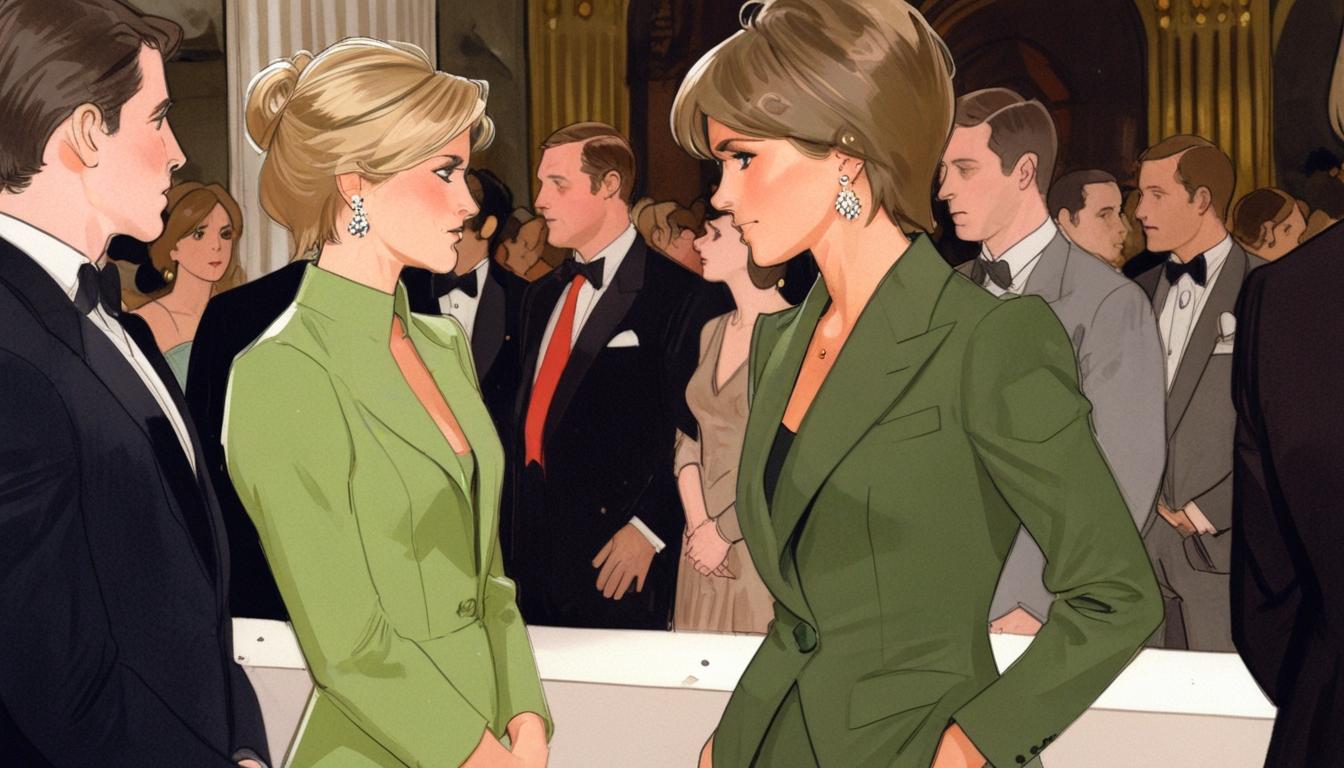The recent engagement of the Princess of Wales has captivated both the fashion world and the media, as Kate Middleton demonstrated her genuine enthusiasm for British designers at the presentation of the Queen Elizabeth II Award for British Design. This event, held on May 13 at 180 Studios in London, marked her first solo official outing of the season and reflected her ongoing support for emerging designers and sustainable practices within the industry.
As Middleton mingled with recipients and shortlisted nominees, her extensive knowledge of their work surprised many attendees. Notably, designer Clio Peppiatt expressed her admiration, stating that Kate was not only aware of Peppiatt’s designs but was also excited to engage with their intricacies. The dialogue between them touched on Peppiatt's signature pieces, which are often inspired by treasured postcards of beloved places, revealing the Princess’s attention to detail and her appreciation for craftsmanship. Peppiatt noted, “She mentioned she loved the handicraft,” reinforcing the personal connection in their exchange.
The event underscores the significance of the award, established in 2018 to honour emerging British talent while promoting community-mindedness and sustainability—values that resonate deeply in the current fashion climate. The evening saw the award presented to Saul Nash, recognised for his innovative approach to menswear that seamlessly fuses functionality with artistic expression. Such recognition is crucial as British fashion navigates its role on the global stage, where support from the royal family enhances its visibility and cultural importance.
During the occasion, Middleton wore a stunning olive suit by Victoria Beckham, a choice emblematic of her commitment to British fashion both in style and substance. This sartorial decision aligns with the concept of the "Kate effect," a phenomenon where her fashion choices lead to rapid sell-outs, thereby influencing not just trends but consumer behaviour across the industry.
The Princess’s interaction with each designer at the event was characterised by curiosity and warmth. Patrick McDowell, another designer to catch her attention, shared that she engaged deeply with his sustainable collection, asking insightful questions about the production process. He remarked, “She was genuinely interested to meet all of the team,” which highlights her dedication to spotlighting the people behind the garments, not just the end products.
With a background in art history from the University of St. Andrews, where she met Prince William, Kate's passion for art and design clearly permeates her royal duties. This personal connection could explain her thoughtful approach as she navigates the responsibilities of her role, bridging royal tradition with contemporary culture.
Conner Ives, an emerging designer who met the Princess during the event, recounted how surreal it was to interact with her after having seen her iconic wedding gown on television as a child. His studio's focus on sustainability through vintage textiles aligns with the ethos of figures like Nash and McDowell. Ives expressed a desire to dress the Princess, reflecting not only a professional aspiration but also the palpable excitement that swirls around the royal's fashion engagements.
In a time when sustainability and cultural awareness are at the forefront of discussions in fashion, the Princess of Wales's participation in this event is a beacon of support for a new generation of designers, reaffirming her role as an influential figure in the realm of style, social responsibility, and the celebration of British heritage.
Reference Map
- Paragraph 1: (1), (2), (3)
- Paragraph 2: (1), (4)
- Paragraph 3: (2), (6)
- Paragraph 4: (1), (5)
- Paragraph 5: (1), (6)
- Paragraph 6: (1), (4)
- Paragraph 7: (1), (5)
- Paragraph 8: (3), (7)
- Paragraph 9: (1), (6)
- Paragraph 10: (1), (4)
Source: Noah Wire Services
